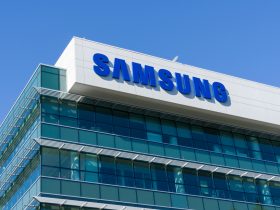A new gene editing process that is so precise it can switch out tiny, individual sections of DNA at their location is raising hopes that we might in the foreseeable future control the biotechnology to cure most, if not all, genetic diseases. Research recently published in the scientific journal Nature demonstrated how the new technique is able to “make precise DNA changes, of the kinds needed to correct most genetic diseases.”
The science of gene editing has made significant leaps forward over the past decade thanks to the Crispr Cas9 tool. Crispr is based on a mechanism of the bacterial immune system that spots viruses and attacks them with nano-sized molecular ‘machines’ that then cut them up before they are able to infect the bacteria. Crispr found a way to harness these molecular machines in a way that allows them to be instructed to find and slice out a specific section of DNA, before replacing it. This has allowed scientists to efficiently alter or repair sections of DNA and within several years condensed the kind of work that would a decade ago have required years of PhD work into a few days.
However, as much of a leap forward as Crispr Cas9 has represented, it still has its limitations. Using it, we can now far more quickly and cheaply than ever before edit genome sequences. But, perhaps unsurprisingly for a technique that relies on programming molecular bacterial ‘machines’, it is not completely reliable in its accuracy. The wrong section of DNA can be cut out or the replacement section not inserted accurately enough, or due to some other inaccuracy, fail to work as intended.
Crispr has hugely furthered our genetic knowledge and capabilities within a short space of time but, especially when it comes to being applied to humans, has risks great enough to represent a significant barrier. Genetic research using Crispr has been applied by Chinese scientists to try to genetically modify human embryos but hit the barrier of ‘mosaicism’, which refers to an outcome of some cells being successfully edited and others not.
However, the new technique is far more accurate and tidy. Rather than cut out and replace DNA sections, it acts more like a ‘word processor’, by allowing scientists to change individual genome ‘letters’ on a DNA strand ‘in situ’. As easy and non-destructive as moving the cursor on a computer to a single letter on a document, deleting it and replacing it with another.
David Liu of MIT’s Broad Institute and Harvard, who worked on the research, described the breakthrough as a “long standing aspiration in molecular life sciences, to be able to make any DNA change in any position of a living cell or organism, including potentially human patients with diseases.”
The more accurate targeting the technique allows, and its less invasive way of editing DNA means changes made were shown to be much less likely to go wrong, and also led to a lower chance of mutations resulting elsewhere in the genome.
The technique is still in a relatively early stage of being refined, with delivery systems taking the tool to a precise spot in an organism still a challenge. As explained by Professor Liu:
“These don’t spontaneously get into cells. Delivery remains an important challenge.”
However, the new technique shows enough promise that the scientists working on it believe it could well prove to be the foundation for a whole new level of human capability and control of genetic modification. In the short term, while still being refined, it is still a significant enough leap forward on even Crispr to simplify and speed of laboratory work and research. In the longer term, the hope is it could allow scientists to one day repair the mutations in embryos that lead to genetic diseases including cystic fibrosis and Tay-Sachs, and find better ways to treat conditions like sickle cell anaemia.










Leave a Reply